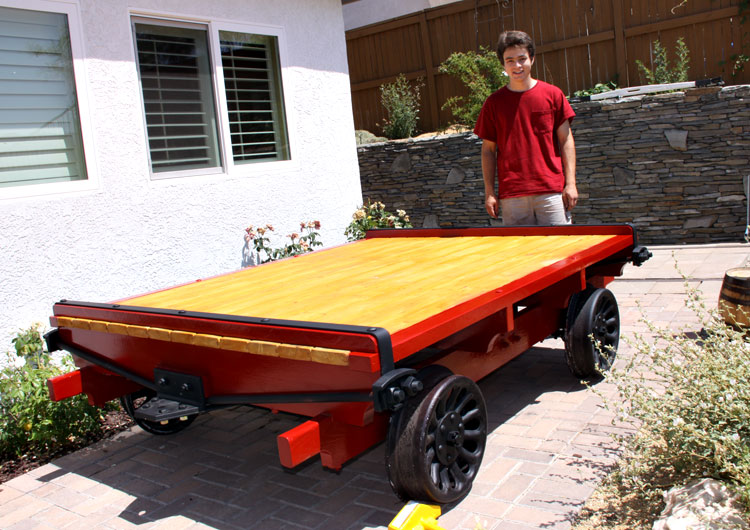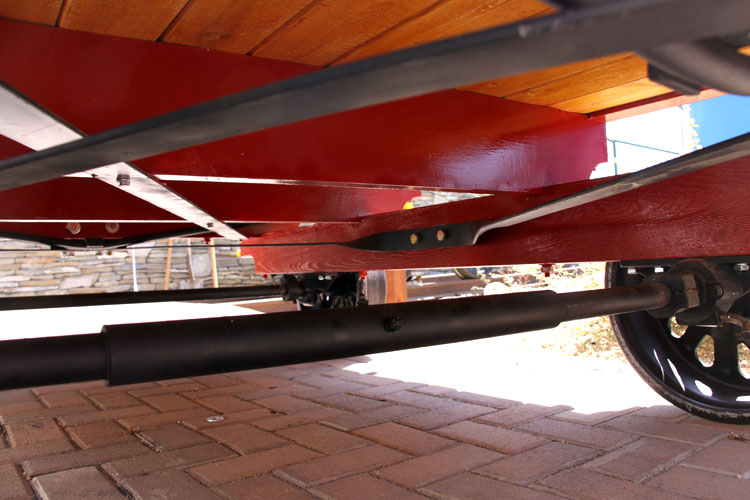
|
Home | Projects | History | Rent | For Sale | Contact Me |
|---|
|
Norfolk Western Push Car Hand cars were not always the best vehicle for section gangs. Lever cars are not usable on grades over 1.5%. They are also not usable for hauling building materials. During my seach for large handcar wheels I came across two set of smaller 16 inch wheels circa 1910. Push cars typically were built with smaller wheels to allow the crew members to propel the car along by kicking their boot against the ties while sitting on the car. Following the invention of the motorcar, many push cars were retrofitted with trailer hitches that allowed them to be towed rather than pushed with human power. Through research I was able to locate original plans for a Norfolk and Western push car circa 1910. The plans came from the impressive archive maintained by the Norfolk and Western Historical Society. While the wheels I acquired did not come from an NW car, they were the style and size specified by the plans. I am almost certain these were manufactured by Sheffield. This project turned out to be quite expensive and somewhat difficult to complete. Had I known this I would have just built a pump car. My original budget was under $2000, but quickly escalated to $3000. The prices of metal and lumber continue to climb these days. The car uses some very large beams. I used ash for the lengthwise beams, and hard maple for the cross beams. Ash is difficult to come by on the west coast and maple was easier to get my hands on. Maple, ash, and white oak were the three hard woods used for rail car construction during this period. This car was designed to have a 4000 pound load capacity. However, the hubs on my wheels were designed for smaller 1 7/16 inch diameter axles. As designed the car used two inch diameter axles. The car originally used a loose wheel bearing, but I am instead using a split axle as they are easier to come by. The axles were both used and bent when I got them. I had them straightened by Precision Straightening in Sun Valley who made them almost like new. In all my projects I have never come across a straight axle. Most push cars of the period contained plain bearings. I figured to make the car more marketable I would place tapered roller bearings on it. I was able to find a set of older Fairmont bearings with housings circa 1930 for the car. It runs very smooth. The car has some impressive metal work that includes metal banding around the ends to prevent damage to the wood frame when carrying rail or ties. It also has one inch tension rods for managing the load weight. Although the car wasn't originally designed for trailer hitches, NW added them to their push cars in the 1920's to allow the car to be hauled by motor car. I fabricated one to the plan, with the exception that I drilled a smaller hole for compatibility with modern motor cars in case I decide to sell the machine later. Push car costs: 1. Wheels $450 2. Axles and bearings $550 3. Frame lumber $650 4. Deck $150 5. Water jet cutting $100 6. Tension rods $400 7. Hitch and banding steel $200 8. Primer, paint, stain $100 9. Fastener Hardware $300 10. Bits, epoxy, etc. $100 Total: $3000 
Completed car. The longest carriage bolts pass through the way down through the two support beams, a total of 14 inches. Those were difficult holes to drill straight. The best way is to start with a drill press to get the position straight. The rest of the hole was finished with a hand drill. 
Heavy duty trailer hitch built as specified by Norfolk and Western.  Complex metal work underneath. Most of it is for the hitch that required twisting the metal. This was accomplished with a vice and a big wrench.
Complex metal work underneath. Most of it is for the hitch that required twisting the metal. This was accomplished with a vice and a big wrench.
The push car includes 1 inch thick tension rods to support the load on the platform. I had these rods manufactured by the Portland Bolt Company. I designed the rod holders on the end in Solid Works which were water jet cut from 5/8 inch steel plate. I bent the metal banding using my Harbor Freight rod bender. Return to projects menu |
|